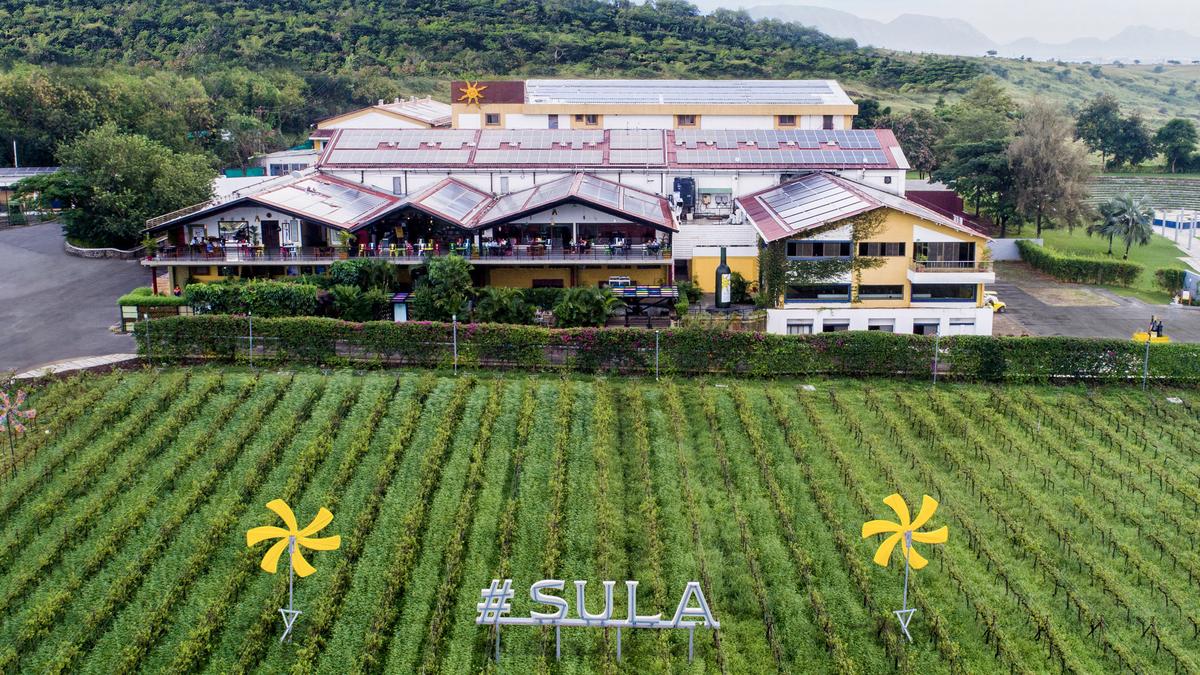When it comes to converting a sunlit patch of land into a space for wine enthusiasts, Sula Vineyards has charted a steady course.
Founded in Maharashtra’s Nashik district, by Rajeev Samant, Sula has spent 25 years exploring the potential of Indian winemaking, showing that with a blend of foresight and adaptability, it’s possible to carve out a niche in a market where wine consumption has traditionally been limited.
At a recent monsoon tasting event organised by Sula, we wandered through lush grape farms, set at an elevation of 600 metres from the sea level, against the stunning backdrop of the Western Ghats. Sula’s winemakers — Rahul More, Rupali Bhatnagar, alongside other members of the team — shared insights of the winemaking process, from grape harvesting to fermentation, pressing, clarification, ageing, and bottling.
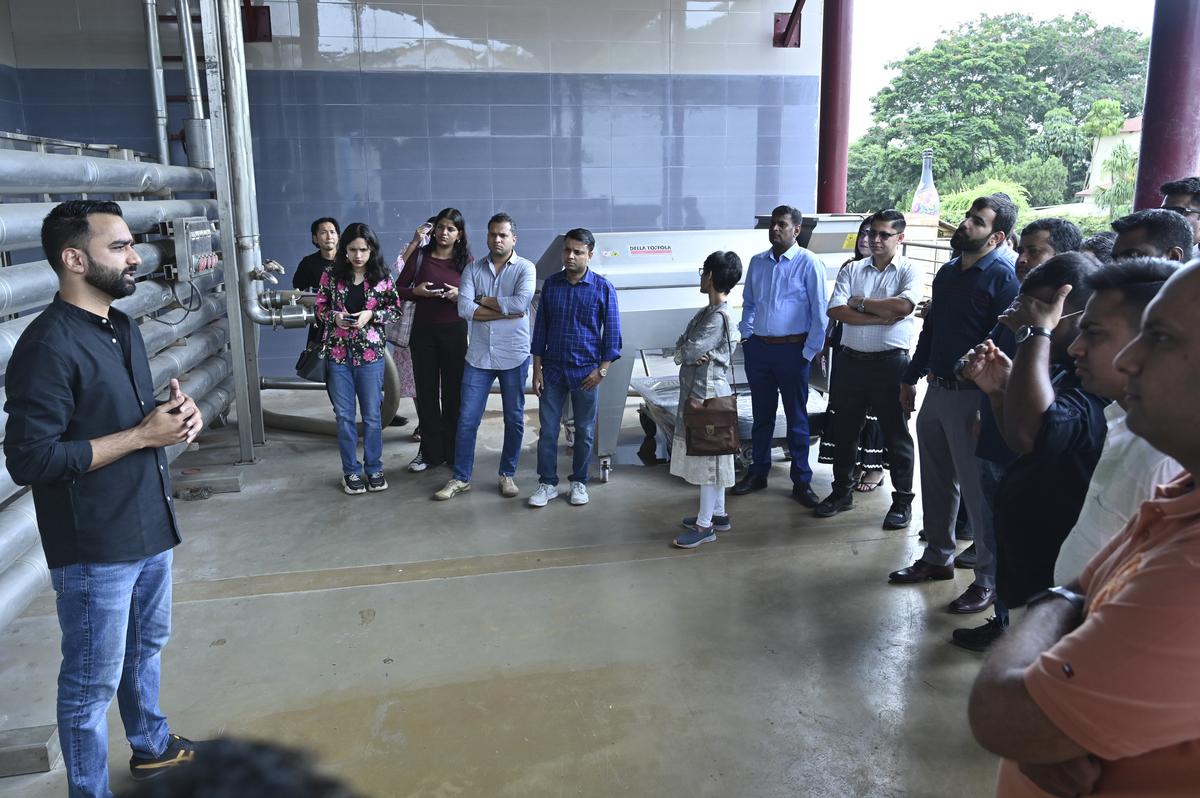
Rahul More, chief winemaker at Sula, explains the A to Z of the winemaking process.
| Photo Credit:
Special Arrangement
The experience included tastings directly from the tanks, followed by a curated session at Beyond by Sula, an exclusive property nestled behind the hills of Gangapur, where we sampled a selection of six wines from the Source range. Subsequently, we visited the barrel storage, where we tried wines straight from the barrels, learning how the wood’s characteristics impart flavours to the wine.
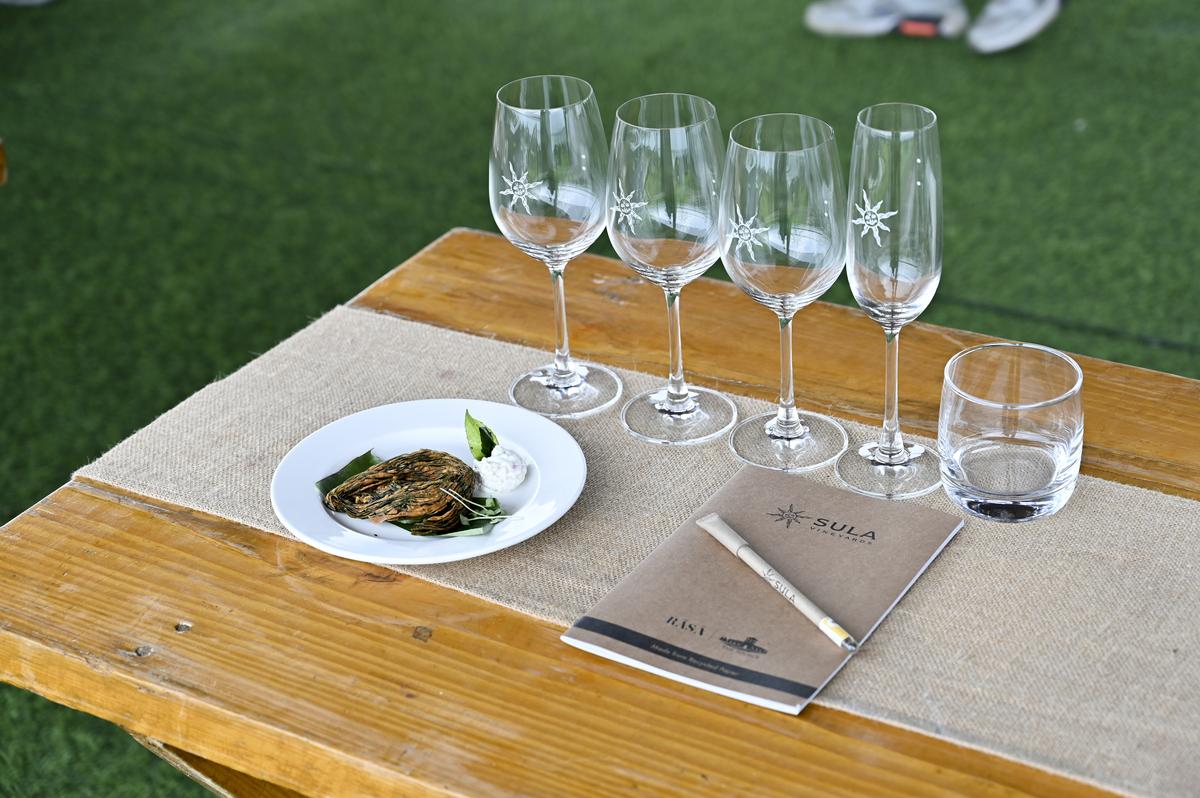
Sula’s monsoon wine tasting session at its Nashik property. The wines were paired with pathrode, a classic Indian snack made with steamed colocasia leaves.
| Photo Credit:
Special Arrangement
A milestone launch
A couple of weeks after the monsoon tasting event, Sula launched its newest wine — Sula Merlot, in conjunction with its 25th anniversary. Marking a significant milestone in the brand’s evolution, the merlot was the first addition to the core Sula series in nearly a decade.
In a region that experiences both severe drought and critical monsoon seasons, Sula has adopted innovative strategies to conserve water. During the monsoon, the winery harvests up to 90% of its annual water needs and reuses treated water to minimise its carbon footprint.
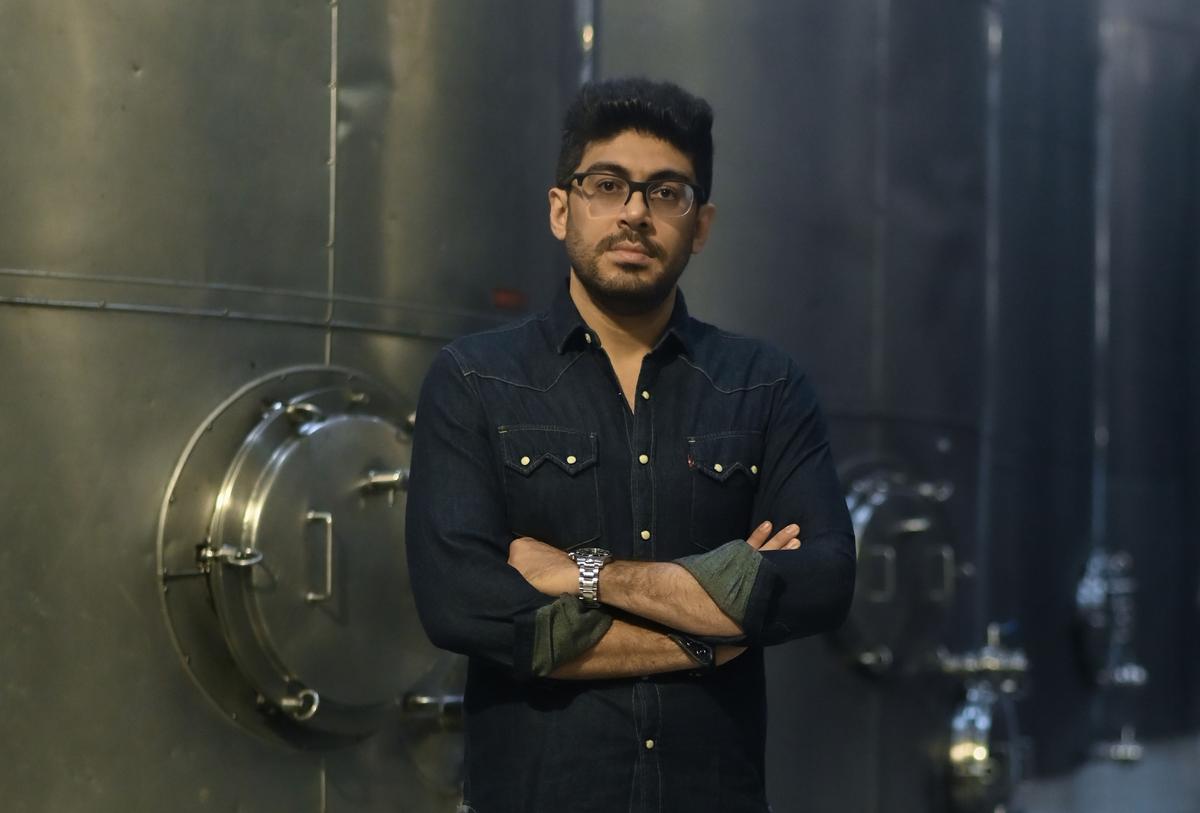
Karan Vasani, COO at Sula, is optimistic about the growing wine market in India.
| Photo Credit:
Special Arrangement
According to Karan Vasani, Chief Operating Officer, Sula, drip irrigation systems have been installed, resulting in a 40% reduction in water consumption, and solar energy plays a significant role in their operations.
Shifting seasons
Discussing the challenges posed by climate change, particularly the rising temperatures in Nashik, Karan says Sula has adapted its viticulture practices, such as early harvest, to mitigate the impact of pre-summer harsh temperatures or late monsoons that can affect the acidity of the grapes.
Grapevines undergo two growth cycles: the first cycle involves harvesting from January to March, while the second cycle begins in September and runs until March. After the harvest, the plants are pruned back, and new growth occurs from late April to August. However, during the latter part of the growing season, no crop is produced.
“In the past, we would start pruning and preparing for the new season at the end of August. Now, we’ve shifted that to the second week of September to avoid the risk of late monsoon rains. This change has also influenced the style of our wines. The alcohol content in wine is linked to the sugar content of the grapes, which is converted to alcohol during fermentation. By delaying the start of the growing season, we can harvest grapes later in the winter, allowing them to ripen during the summer months,” says Karan.
A bird’s eye view of Sula Vineyards, Nashik. The company has adopted sustainable initiatives like solar energy, besides tweaking their viticulture practices to changing weather patterns.
| Photo Credit:
Special Arrangement
This approach helps maintain the desired flavour profile. Sula aims for slightly lower alcohol levels in their wines to enhance natural flavours and preserve acidity, which is crucial in the hot climate of Nashik. “While acidity is often misunderstood, it plays an important role in the balance and drinkability of both white and red wines. To achieve this, we have opted to harvest grapes a bit earlier, resulting in more natural flavours without relying on external acidic adjustments,” Karan says.
Sula is also leveraging modern agricultural technologies, such as data systems for microclimate monitoring and water management. Nevertheless, Karan has great confidence in the nearly 800 farmers Sula partners with for grape production.
A toast to change
In India, the wine market is still evolving, especially among those aged 25 to 40. While the country lacks a robust wine culture, there’s now significant interest in wine.
“There is a notable shift in consumer behaviour as alcohol consumption becomes more accepted, particularly among women. Today, women have better agency than previous generations, often choosing wine even if their partners prefer beer. This change represents a growing market and opportunity for the wine industry in India,” Karan says.
When asked about Sula’s position among its contemporaries, Karan says that there is no value in competing for a small slice of the pie. “Our focus is on expanding the overall market. As consumer awareness increases and more Indians travel to places like Europe, they become more familiar with wine culture. We aim to enter cities like Coimbatore and Moradabad. A generational shift is happening, and I genuinely believe that India’s wine culture will have its moment in the sun,” he says.
The writer was in Nashik on the invitation of Sula Vineyards
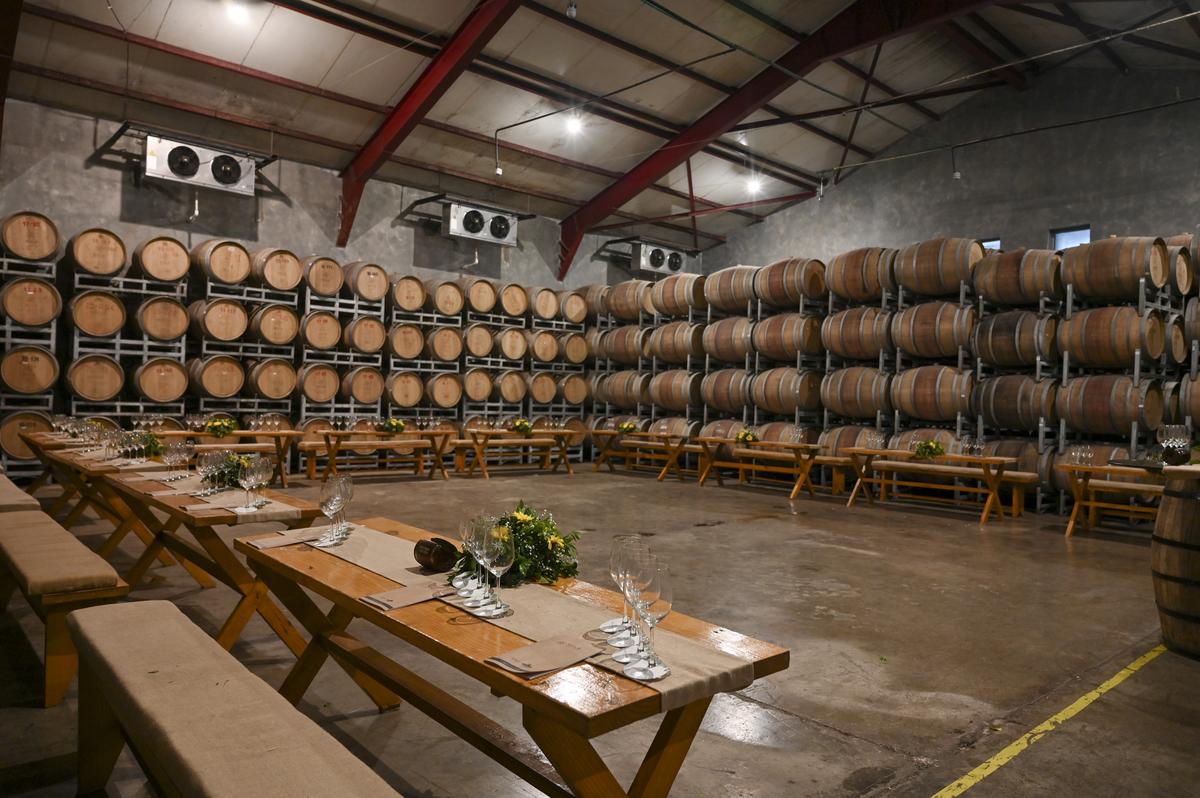
The barrel room in Sula Vineyards, Nashik where the wine is let to age.
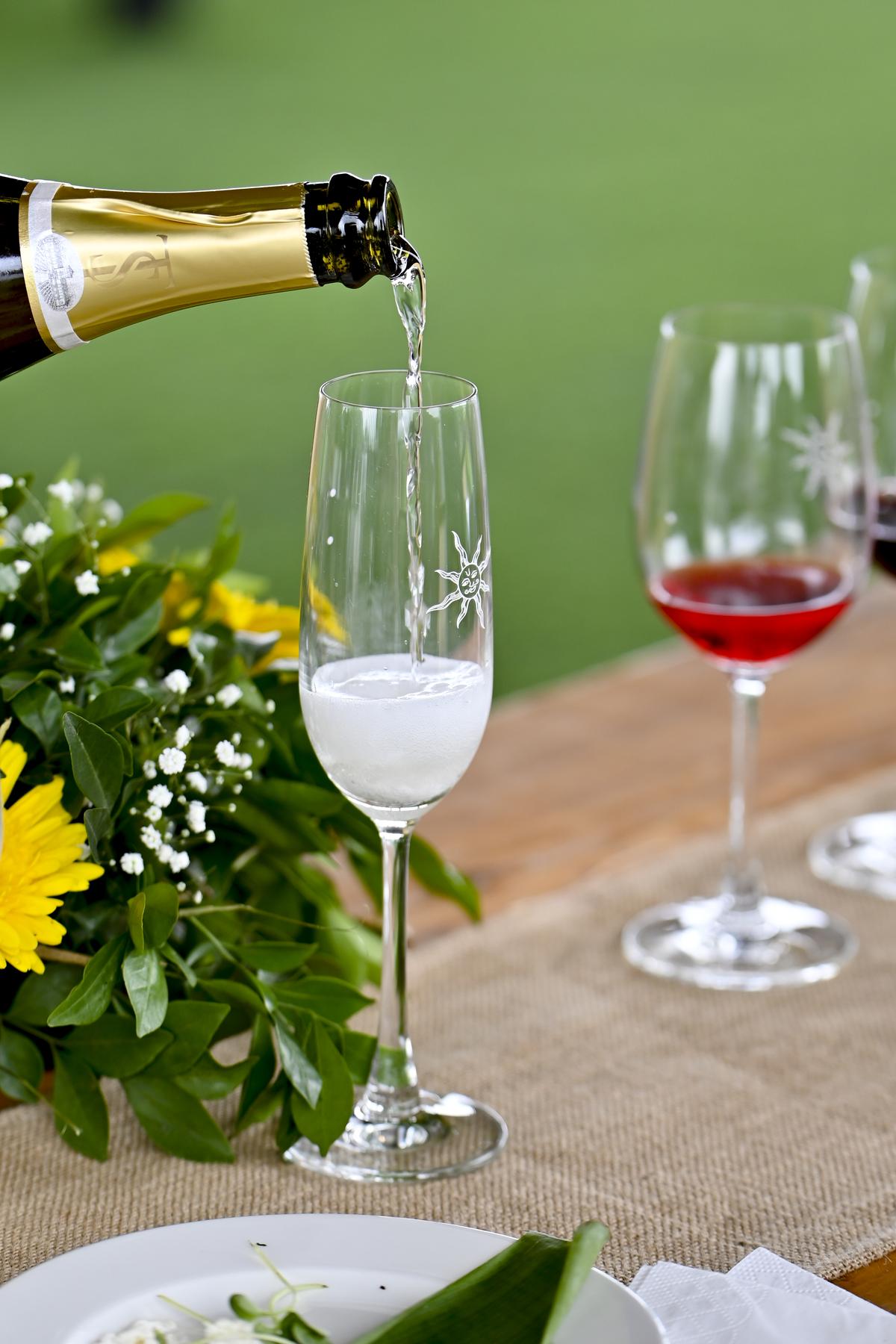
Sula’s monsoon wine tasting session at its Nashik property.
Published – October 25, 2024 03:36 pm IST
#Sula #Vineyards #celebrates #years #Merlot #focus #sustainability
